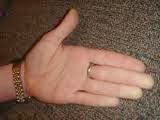The World Diabetes Day logo is the blue circle - the global symbol for diabetes which was developed as part of the Unite for Diabetes awareness campaign. The circle symbolizes life and health.
India is facing an epidemic of diabetes. At present, confirmed diabetes patients in India are 67 million, with another 30 million in prediabetes group. By 2030, India will have the largest number of patients in the world. Diabetes is not only a blood sugar problem, but brings along other complications as well.
Diabetes and urologic diseases are very common health problems that markedly increase in prevalence and incidence with advancing age
Diabetes is associated with an earlier onset and increased severity of urologic diseases. Apart from increased frequency and severity of urinary tract infections Diabetes is also associated with kidney stone formation, bladder dysfunction, sexual dysfunction and various other renal abnormalities.
Diabetic nephropathy
A complication that occurs in some people with diabetes. In this condition the filters of the kidneys, the glomeruli, become damaged. Because of this the kidneys 'leak' abnormal amounts of protein from the blood into the urine. This can lead to renal failure, cardiovascular diseases and high blood pressure.
Urinary tract infections
Diabetic individuals have a two- to threefold higher prevalence of asymptomatic bacteriuria and are at risk for developing more serious consequences.
Emphysematous cystitis and pyelonephritis,relatively rare infections, occur almost exclusively in diabetic patients.
Other clinical manifestations that are unique or strongly associated with diabetes include abscess formation and renal papillary necrosis.
Bacteremia secondary to UTI and pyelonephritis may also be more common in patients with diabetes.
Also of importance is the fact that many diabetic patients are infected with non–Eschereschia coli species in particular klebsiella and other gram negative rods, enterococci and other group B streptococci.
Additionally, urinary infections and asymptomatic bacteriuria with Candida Albicans occur commonly in diabetic women.
Individuals with type 2 diabetes are at an increased risk for developing kidney stones in general, and have a particular risk for uric acid stones. People with type 2 diabetes have highly acidic urine, and this metabolic feature helps to explain their greater risk for developing uric acid stones
Bladder dysfunction
Over 50% of men and women with diabetes have bladder dysfunction. Current understanding of bladder dysfunction reflects a progressive condition encompassing a broad spectrum of lower urinary tract symptoms including urinary urgency, frequency,
nocturia, and incontinence. Symptoms due to
BPH are more severe in diabetes patients. Previously, the dysfunction has been classically described as diminished bladder sensation, poor contractility, and increased postvoid residual urine, termed bladder cystopathy . However, bladder cystopathy most likely represents end-stage bladder failure with symptoms of infrequent voiding, difficulty initiating voiding, and postvoid fullness and is relatively uncommon.
Bladder instability or hypersensitivity is the most frequent finding, ranging from 39–61% of subjects. Diminished bladder contractility or sensation has been found less often and an acontractile bladder appears to be quite uncommon.
Male sexual dysfunction
Erectile dysfunction (ED) occurs in a substantial number of men with diabetes, with prevalence estimates ranging from 20 to 71%. In men with diabetes, the relative risk for ED increases with poor glycemic control, duration of diabetes, and the number of other nonurologic complications of diabetes (i.e., retinopathy, nephropathy, and limb loss).
Phosphodiesterase-5 inhibition leads to significant improvements in function in 50–70% of type 1 and type 2 diabetic patients with ED and controlled hyperglycemia. However, the efficacy is reduced compared with nondiabetic populations. Nonresponders to oral treatment benefit from intracavernosal injections of prostaglandin-E1 and related agents, as >80% of men with diabetes develop adequate penile rigidity.
Effective surgical interventions in such cases are limited to penile implants. The risk of periprosthetic infection after implantation in diabetic men ranges from 3.2–15%.
Female sexual dysfunction is associated with biological, psychological, and social determinants. It includes disorders of desire/libido, arousal, inhibited orgasm, and sexual pain. Prevalence increases with age, cardiovascular disease, diabetes, cancer, hysterectomy, and neurological conditions.
Who is at risk for developing sexual and urologic problems of diabetes?
Risk factors are conditions that increase the chances of getting a particular disease. The more risk factors people have, the greater their chances of developing that disease or condition.
Diabetic neuropathy and related sexual and urologic problems appear to be more common in people who
- have poor blood glucose control
- have high levels of blood cholesterol
- have high blood pressure
- are overweight
- are older than 40
- smoke
- are physically inactive
Can diabetes-related sexual and urologic problems be prevented?
People with diabetes can lower their risk of sexual and urologic problems by keeping their blood glucose, blood pressure, and cholesterol levels close to the target numbers their health care provider recommends.
Being physically active and maintaining a healthy weight can also help prevent the long-term complications of diabetes.
For those who smoke, quitting will lower the risk of developing sexual and urologic problems due to nerve damage and also lower the risk for other health problems related to diabetes, including
heart attack,
stroke, and kidney disease.
Review of your medication,Certain medicines can affect the kidneys as a side-effect which can make diabetic kidney disease worse. For example, you should not take
anti-inflammatory medicines unless advised to by a doctor. You may also need to adjust the dose of certain medicines that you may take if your kidney disease gets worse.


























































